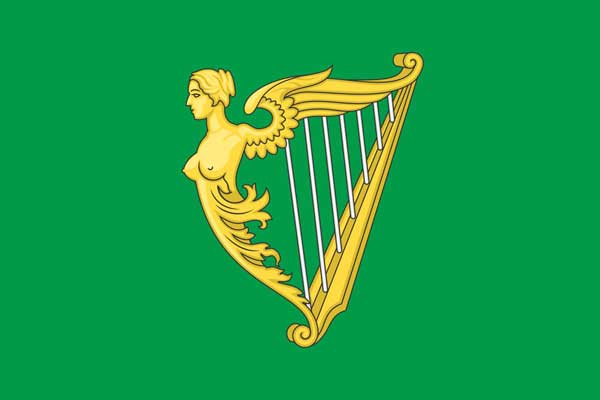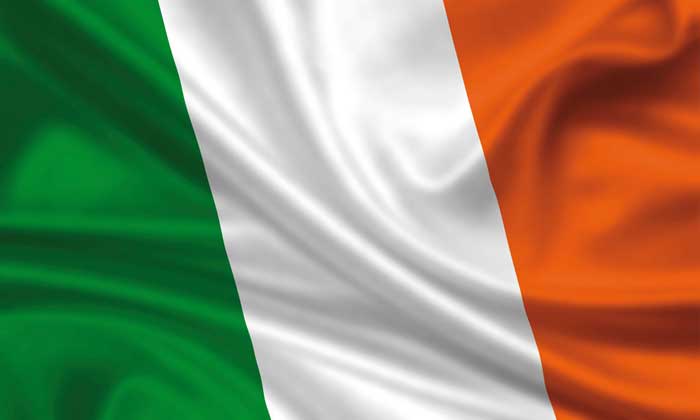“A National Flag is the most sacred thing a nation can possess” Thomas Francis Meagher
The Irish flag or Tricolour is the National Flag that represents and symbolizes The Republic of Ireland. In Irish the flag is known as Breach na hEireann.
Waterford is home to My Real Ireland and is famous for Vikings, Normans and world famous Waterford Crystal.

Where was the Irish Flag First Flown and by Who?
Did you know that the Irish Tricolour was flown for the first time in Waterford? On the 7th of March 1848. The Irish Tricolour was flown publically in Waterford, by Waterford native Thomas Francis Meagher.
This historic event took place during a Young Irelander Rebellion that took place the same year. This historic event took place at number 33 The Mall, Waterford. Which at that time was know as the Wolfe Tone Confederate Club.
“From Paris, the city of the Tricolour and the barricade, this flag has been proudly borne. I present it to my native land, and I trust that the old country will not refuse this symbol of a new life from one of her youngest children.
I need not explain its meaning. The quick and passionate intellect of the generation now springing into arms will catch it at a glance” Thomas Francis Meagher.
Thomas Francis Meagher would go down in history as one of Ireland’s most amazing historical characters.
How a boy from Waterford rose to the esteemed rank of Brigadier General Thomas Francis Meagher of the Union Army. He fought valiantly during some of the bloodiest battles of the American Civil War.
Thomas Francis Meagher along with a contingent of Irish revolutionaries traveled to France in early 1848 to congratulate the French Revolutionaries upon their success in over throwing Louis Philippe of France.
While in France Thomas Francis Meagher was presented with a silken Tricolour that was woven by French Revolutionary Ladies.
On his return to his homeland Meagher presented the Tricolour to the people of Ireland and explained its deep meaning. The green is a representation of Nationalist Catholic Ireland and the Orange represents the Unionist Protestants.
“The white in the centre signifies a lasting truce between the Orange and the Green and I thrust that between its folds the hands of the Irish Protestants and The Irish Catholic may be clasped in generous and heroic brotherhood” Thomas François Meagher.
Meagher was a wondrous character and believed strongly in an Ireland free from British Rule but also in an Ireland of Peace. When he returned from his studies in England, in 1843 he was full of new thoughts, ideas and dreams for his native land.
He believed in the repeal of the Act of Union between Ireland and Britain and found inspiration and like minds in the Young Irelanders and The Irish Confederation.
These young men were inspired by nations like France, The United States and rebellions that had occurred in Ireland such as The Rebellion of 1798.
He lived in hope of Irish Independence. In 1848 rebellions were sweeping across Europe. These revolutions were also known as “Springtime of the People” and “The year of Revolution”.
The New Irish Flag hung proudly in Waterford City for 8 days before being removed by British Forces. The 1848 Young Irelander Rebellion, was put down by British forces.
“The treason of which I stand convicted loses all its guilt, has been sanctified as a duty and will be ennobled as a sacrifice.” Thomas Francis Meagher.
Thomas Francis Meagher was arrested for his involvement in the 1848 Rebellion.
He was put on trial for treason and a sentence of death was passed down on him.
However, thanks to much lobbying and support from Irish across the world, including rising influences from the Irish American diaspora, this sentence was later commuted and he was banished on a prison transport ship to Van Diemen’s Land, which is now known as Tasmania (Australia).
“Judged by the law of England, I know this crime entails upon me the penalty of death but the history of Ireland explains that crime and justifies it”. Thomas Francis Meagher.
From here he made a daring escape (after nearly starving to death) and made his was to New York City where, after a new marriage and a stint as a lawyer and orator, his Epic Irish American story begins.
The 69th Regiment Irish Brigade
He went on to found the Irish Brigade, which included one of the most famous military Regiments in history, the 69th Infantry Regiment, better known as the “The Fighting 69th.”

The Tricolour was again used as part of a major Irish Rebellion, this time during the Easter Rising of 1916. Until this Rebellion the main flag of Ireland was green with a Harp in the centre (Ireland is the world’s only nation to have a musical instrument as its national symbol) The Green Flag of the Irish had been in existence since 1642.
4Once rebel forces took the GPO (General Post Office) on O’Connell Street in Dublin, it became the rebel headquarters and both flags were hoisted above the GPO during The 1916 Rising.
The Tricolour was raised by Gearoid O’Sullivan. This was also the site, where the Proclamation of The Irish Republic, was read for the first time by revolutionary leader, Padraig Pearse.
During the Irish War of Independence, the Tricolour was the flag used by Rebel Forces opposed to British Rule in Ireland.
After the signing of the Anglo Irish Treaty of 1922 Ireland became an Irish Free State and The Tricolour remained the National Flag. In 1937, Article 7 of the Irish Constitution of the Irish Republic states. “The national flag of Ireland is the Tricolour of green white and orange.
Now a symbol that is recognized in every part of the world as a symbol of Ireland, its independence and its people who went all over the world and the wondrous achievements they made.
The Tricolour represents a love of freedom and independence, it can also be said that the Irish Flag has become a symbol of joy and celebration and is held in high esteem throughout the world.
Our people have emigrated around the world for centuries bringing their culture and traditions with them wherever they went, holding on tight to their Irish heritage, our flag is the principle symbol of our Nation and our precious culture.
POBLACHT NA hEIREANN
THE PROVISIONAL GOVERNMENT OF THE IRISH REPUBLIC TO THE PEOPLE OF IRELAND
IRISHMEN AND IRISHWOMEN
In the name of God and of the dead generations from which she receives her old tradition of nationhood, Ireland, though us, summons her children to her flag and strikes for her freedom.
Having organized and trained her manhood through her secret revolutionary organization, the Irish Republican Brotherhood, and through her open military organisations, the Irish Volunteers and the Irish Citizen Army, having patiently perfected her discipline, having resolutely waited for the right moment to reveal itself, she now seizes that moment, and supported by her exiled children in America and by gallant allies in Europe, but relying in first on her own strength, she strikes in full confidence of victory.

